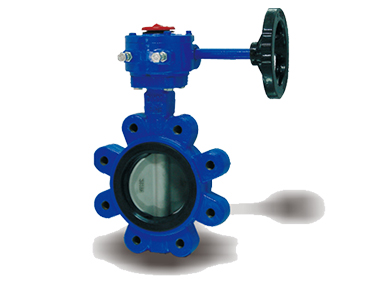How does a butterfly valve work?
Published:2022-10-10 09:46 Author:admin
A butterfly valve is a flow regulating valve. A butterfly valve is a valve in which the obturator rotates around an axis that is at right angles to the direction of flow, and when opened, fluid bypasses the obturator.
In other words, the butterfly valve consists of a disc, with the disc or the stem of the disc passing through the middle. After opening, the valve flap pivots 90 degrees in the valve hole to align with the flow, thereby forming an almost unlimited flow path. The butterfly valve has a rotation angle of 90 degrees, and its operation is similar to a ball valve, which can be quickly closed.
For many years, butterfly valves have been popular due to their thin profile between flanges, which has made them lighter and have a smaller installation footprint. This compact design often also reduces the initial cost of these valves compared to other valve designs.
There are different types of butterfly valves, each with unique design features and applications. Each type is determined by the orientation of the valve stem relative to the disc and the seat angle at which the disc is closed.
The most basic butterfly valve design is often called a concentric or resilient seated butterfly valve. In this type of valve, the valve stem is centered in the middle of the disc and the valve plate is in the center of the pipe hole. The valve usually has a rubber (or elastic) seat and relies on a disc that is in high contact with the seat to achieve sealing.

Juhan butterfly valve is a durable elastic seat valve with integrated valve body, which can reduce weight and increase strength. The unique stem hole design on the valve disc ensures that the stem journal is dry, while the hard-back valve seat makes installation easy and reliable, and it can be replaced in the field without special tools.
In single eccentric butterfly valves, the stem is located behind the disc. Due to the development of double eccentric valves or high performance valves, there are almost no valves of this type on the market today. The single offset of the valve stem causes the valve disc to contact the valve seat, which moves the valve seat three to four degrees to the left, thereby reducing the contact of the valve seat and making the valve longer in service life.
Double offset or high performance butterfly valves have two offset discs with pressure ratings up to 1480 psi. Similar to the single offset design, the rod is located behind the disc. With a high-performance butterfly valve, the second eccentric rod will again move from the center of the disc to the side. This offset geometry allows a 90-degree disk rotation to "friction" onto the valve seat only during a 90-degree rotation.
Double eccentric butterfly valves are used in systems requiring higher pressure resistance. The disc is located in the center of the orifice and is arranged to improve sealing and reduce valve wear. The high-performance butterfly valve features a cost-effective, lightweight design that is ideal for handling water, oil, steam and gas. The corrosion resistance of Juhan butterfly valve, single-component thrust bearing / disc gasket reduces valve body wear and helps to ensure that the disc is centered in the valve hole.
Both elastic butterfly valves and high-performance butterfly valves can be operated by handle, gear or actuator. These devices move the valve disc to the optimal position to fully close or open the valve. Resilient and high-performance butterfly valves are mainly used in the water, chemical and petrochemical industries, but can also be used in fuel processing systems, power and many other applications.


